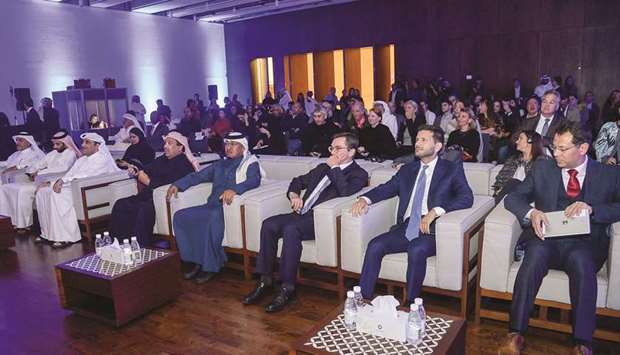In recent decades, the concept of what is heritage has evolved and expanded and new groups have joined the specialists in its identification. Whether they are concerned with giving a building ‘heritage’ status, deciding which building to invest in, planning for the future of a historic site, or push forward to transfer the cultural heritage and values to the next generation – use of cogent heritage aesthetic values as a reference point has always been the priority. Such values shape the decisions that are made. The architectural monuments existing today are capable of shaping the vision of who we are and who we could be in the shadows of who we were and how we have evolved. It won’t be erroneous to say that heritage is not just a collection of aged buildings encompassing conditions, ideas, customs and values of the society that created it in the past, but an insight to the people who use it now and continually modify it.
International competition for antiquities has been fierce since the 19th century. Cleaning up old and picturesque sites can entail the destruction of some of the very monuments which makes them attracting, so conserving them is a real task. The World Heritage List by Unesco has successfully been on a mission to conserve the globe’s most historic natural and cultural sites since 1972 and today some 1,092 locations sit on that list. The primary objective of conservation is to protect cultural heritage from loss and depletion.
On the basis of such considerations, the Embassy of Italy and Msheireb Museums, in co-operation with the UNESCO Regional Office in Doha and Altair4, an Italian company specialised in 3D reconstructions of archaeological sites, recently organised an exhibition ‘ArcheoMed3D Exhibition’ at Bin Jelmood House, Msheireb Museums.
Taking down the route of technology, 3D and Augmented Reality, the exhibition features various Unesco-listed World Heritage sites, including Temple of Zeus in Agrigento and Pompeii, located in Italy; Al Zubarah, Qatar; Volubilis, Morocco; El Jem, Tunisia; Djémila, Algeria; Krak des Chevaliers, Syria; Church of the Nativity in Bethlehem, Palestine; Baalbek, Lebanon; Hagia Sophia, Turkey; Petra, Jordon; Leptis Magna, Libya; and Phile, Egypt among others.
Walking down the exhibition and you find yourself in the ruins of the Greek temple that never completed and the broad stone platform heaped with tumbled pillars and blocks of stone, unmarred by any commercialism and marvelled at the extraordinary testament of Greek civilisation in its exceptionally preserved condition: the Temple of Zeus in Agrigento. Now that’s Virtual Reality. It seemed as if the guests were given the keys to the historical places, that they can get into and experience – just while in Doha, like a door to the Narnia world – considering the detail each installation seizes. Similarly, a layer of sand along the remains of the walled coastal town of Al Zubarah’s palaces, mosques, streets, courtyard houses, and fishermen’s huts; all out-done with 3D technology, in terms of detail. All you need is a smartphone or a tablet with Archeomed3D application installed, and the rest is only what you’ll experience. Initially it just seems like a map printed out with boundaries unless you see from the application’s eye. It’s a 3D model of the heritage sites. Interesting enough and crafted to detail that one could count the number of windows in Haghia Sofia or the stairs in a staircase at Baalbek, Lebanon.
Talking to Community, the envoy said, “Cultural Heritage is really important in defining peoples’ national identities. It represents indeed our past, but it expresses also what we have in common in the present to build up our future. New technologies can ensure that our immense and rich inheritance can be properly preserved today and transmitted to future generations tomorrow. With this ArcheoMed3D exhibition we have created a space for young people to experience and enjoy cultural heritage by using digital tools, 3D and Augmented Reality. Our aim is to encourage their engagement in identifying cultural heritage as an inspiring source to shape who they will be tomorrow.”
“Today, from Doha, we are sending out a very powerful message of cultural inclusion and openness to diversity. Qatar does not close the doors to cultural exchange, dialogue, to co-operation; Qatar is an example of inclusiveness. Culture in all its many forms contributes to give voice to the best side of human beings and is a powerful means to overcome decisions,” said Pasquale Salzano, Ambassador of Italy.
“We hope that this initiative could contribute to encourage dialogue and cultural exchanges, and promote various cultural forms and identities of this wonderful part of the world,” he added.
The opening of the exhibition was followed by a panel discussion ‘Reviving Ancient Heritage Sites Through Virtual Reality’, moderated by Dr Anna Paolini, Unesco Representative in the Arab States of Gulf and Yemen, hosted by Alessandro Furlan, Founder of Altair4, along with Professor Thomas Leisten, acting Chief Officer of Cultural Heritage at Qatar Museum; and Raffaello Furlan, Assistant Professor of Architecture and Urban Design at the College of Engineering of Qatar University. The panel discussion highlighted the use of virtual reality and 3D presentation of cultural heritage and how such technology can help in conservation of heritage sites and drawing attention to the rich archeological heritage of Mediterranean Basin, Middle East and Gulf Region.

GROUP: Dignitaries and guests at the exhibition.
